The Top 10 Albums of 1982
MTV was shaking up the airwaves, but if it was happening during an episode of Diff'rent Strokes. Ten favorite albums from the year the '80s really began.
My very first band was an Asia cover band called Omega. I was the only person in the band (I played keyboards and toy drums, the only two instruments we had in the house), and I didn’t so much play Asia covers as much as I copied the cover of an Asia cassette with tracing paper, which I then filled in with colored pencils and inserted into a blank cassette case. Of the songs I recorded, I can only recall one: the theme song to One Day at a Time.
Because no matter how much I liked Asia, there was no way I could play the keyboard intro to “Only Time Will Tell.” I was nine at the most—my hand could only reach half an octave, maybe. Sure, I’d soon be able to play “Axel F” from Beverly Hills Cop, but that wouldn’t come out until 1984, a full two years away.
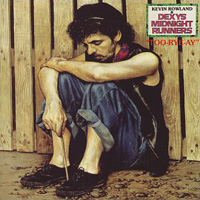
10. Dexy’s Midnight Runners, Too-Rye-Ay
A few years ago I was in a record store and ran into a friend I hadn’t seen in some time. We spoke briefly, said our how-do-you-dos, doing-good-thank-yous. I came away from the conversation with one thought: Why was he wearing overalls? I don’t think he’d been gardening, yet here he was, in overalls, out in public. There was that one video from the ‘80s, with the band who wore overalls. (As the rumor went, they wore nothing else.) I mean, sure, maybe while gardening, but out in public like that?

9. Bruce Springsteen, Nebraska
A long time ago, before Google Image Search, I had a fascination with Nebraska—the state, not this album—and though I’d never been there before, I pictured wide, winter-scorched plains, and imagined a sense of isolation that must, I figured, be exactly what Nebraska was like. Of course I had no good reason for this, it was just a feeling, and I still haven’t been to Nebraska (one-time state tourism slogan: “The Good Life”), but Springsteen’s stripped-down album evokes that same feeling of desolation and solitude. So I must not be the only one.
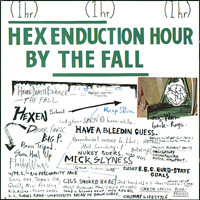
8. The Fall, Hex Enduction Hour
Of the over 50 people who have at one time or another been members of the Fall, only Mark E. Smith has never been sacked. Though that’s because it’s his band, it also goes some way toward explaining why Fall songs and Smith’s accompanying vocals have so little to do with each other. There’s zero chemistry—at points he appears to be singing a completely different song than the one the band is playing, or instead he’s voicing over a nine-minute melody. This is actually more charming than it sounds.
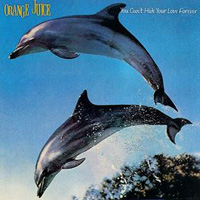
7. Orange Juice, You Can’t Hide Your Love Forever
Though the Smiths formed in early 1982, the world would have to wait for the following year to hear their first recorded output, a groundbreaking new sound that would take everyone by surprise—except for anyone who’d heard Orange Juice the year before. From the croon to the bouncy guitar riffs, it’s a wonder it took almost a decade and a half before Morrissey and Marr were successfully sued—though at that time it was the Smiths’ drummer who did the litigating. Barbarism begins at home, indeed.
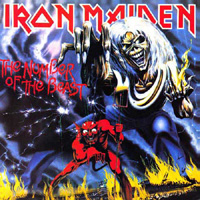
6. Iron Maiden, The Number of the Beast
“Metal” is a style of dramatic rock music typified by loud electric guitars. For the purposes of this discussion, we will address two types of “metal”: “heavy metal” and “hair metal.” (“Speed metal” and other “metal” variants will be covered at later points.) The difference between “hair metal” and “heavy metal” are their focal points: The former emphasizes hairdressing over music, the latter does not. Because although long hair is also a hallmark of “heavy metal,” we’re talking un-styled, four-foot-long bowl cuts here.
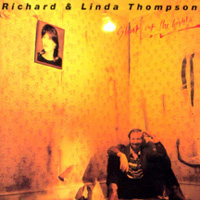
5. Richard and Linda Thompson, Shoot Out the Lights
Few songs can be carried by a guitar solo alone, and Richard and Linda Thompson’s “Walking on a Wire” is no exception—her vocals are a force his guitar had to reckon with. On paper it looks like a pretty standard 30-second (2:28-3:02) guitar solo, beginning with a nothing-special walk-up-and-down with a little vibrato thrown in, then into an impressively quick walk up the frets to the upper registers, into a two-string pluck-along with the melody, then a crazy walk-up-and-down and back up again, finally into a line of staccato chord-plucking that crashes back into the rest of the song. In the middle of all that, it’s fun to imagine Linda walking over and kicking Richard in the shin “for no obvious reason.”
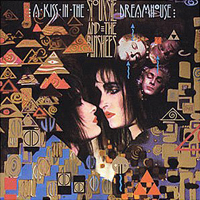
4. Siouxsie and the Banshees, A Kiss in the Dreamhouse
When practically every other word in a song rhymes—that’s some extraordinary lyrical work. Just look at how many rhyme pairs Siouxsie Sioux (hey, even that rhymes) squeezes into “Painted Bird”: wings/sing; freak/beak/shrieks; (con)fus(ing)/hue; pea(cock)/scream(ing); bird/absurd/bird/hurt(ing)/nerve; choke/joke; unison/carrion; unison/carrion/carry on; bird/absurd/bird/hurt(ing)/nerve; sorrow/tomorrow/sorrow; fated weather/painted feather; fur/purr/bird/nerve/birds; heard/bird/bird/nerve; sorrow/tomorrow; feather/weather; birds/nerve. Since the Human Genome Project has wrapped up its map of us, maybe they can start on Siouxsie’s albums next.
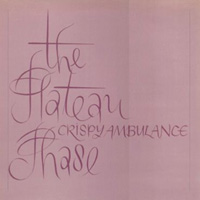
3. Crispy Ambulance, The Plateau Phase
If you like Factory Records—and I do—then you may have heard of Crispy Ambulance: Ah yes, that’s the band whose lead singer sang for Joy Division when Ian Curtis was ill, a concert that descended into a riot. Crispy Ambulance is more than a footnote, though; this album, refreshingly un-punk in a post-punk heyday, was the sole proof of their greatness—at least for another 20 years, when they’d finally record their second album. And you thought the Stone Roses were Manchester’s most notorious slouches.

2. Roxy Music, Avalon
In 1973 Brian Ferry won (or lost, if you ask prog-rock disciples) the battle of the Brians over bandmate Eno, who left Roxy Music in the biggest stink over artistic differences since Cézanne accused Pissarro of “painting on a few extra pounds” in his Portrait of Cézanne. After Eno’s departure, the band’s vision—up to that point muddling between glam and art—became only clearer. Throughout the remainder of the ‘70s, Roxy Music created a tight, soulful accessibility that would have a profound effect upon then-adolescent, soon-New Romantic icons like Duran Duran, who may already have been shopping in the girls’ department. Their final album, Avalon, was the apex of that sound.

Album of the Year: Mission of Burma, Vs.
You might not know this, but you’ve already heard Mission of Burma. Either you heard them because you heard Moby’s cover of their song “That’s When I Reach for My Revolver” (note: both Moby and Burma bassist Chris Conley are from Darien, Conn.), or you’ve heard R.E.M.’s cover of “Academy Fight Song” (note: they played it on their Green tour), or you heard of them because Pearl Jam named their album Vs. after Mission of Burma’s Vs. (note: this is like if you named your kid “Vedder,” which you probably considered at one time).
Yes, Mission of Burma is the most influential band whose own recorded music you may never have listened to—even though they practically invented American indie rock. There’s not a song on Vs. that doesn’t seem directly connected to some other song you’ve heard, whether it’s by Sonic Youth or Polvo or Pavement or Superchunk or Sonicpavechunko U.K. (aka Blur). Controlled and chaotic, intellectual and impassioned, Vs. still sounds new and relevant—its mines have hardly been plundered, and there’s still much to discover here.
